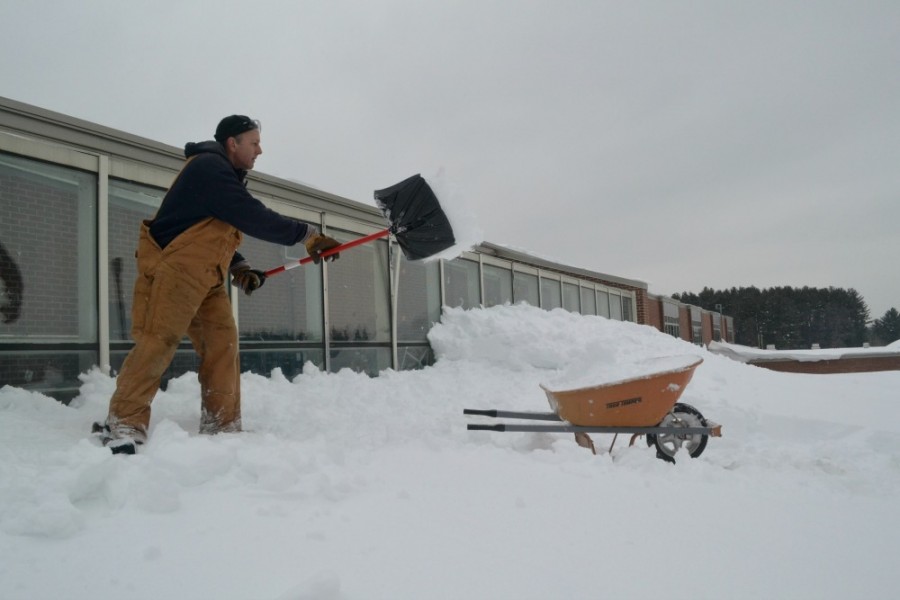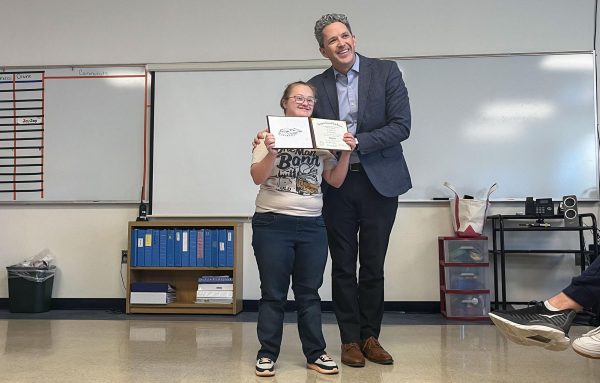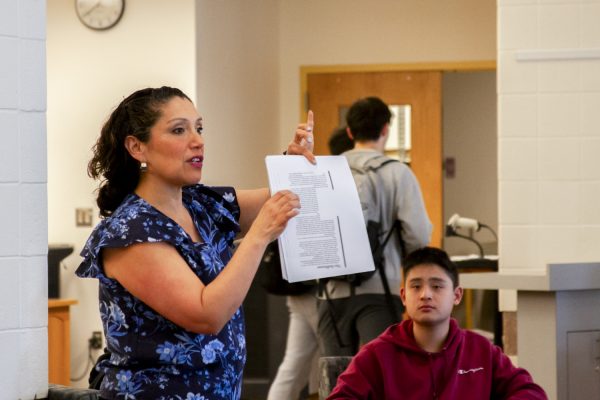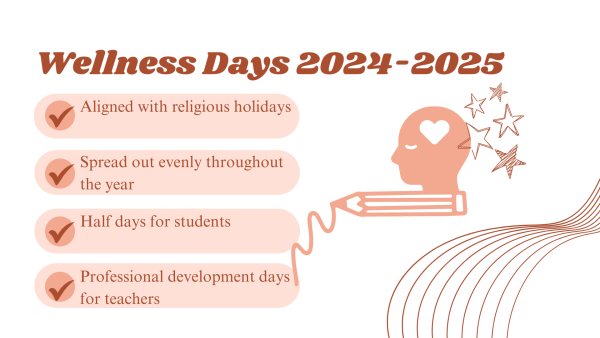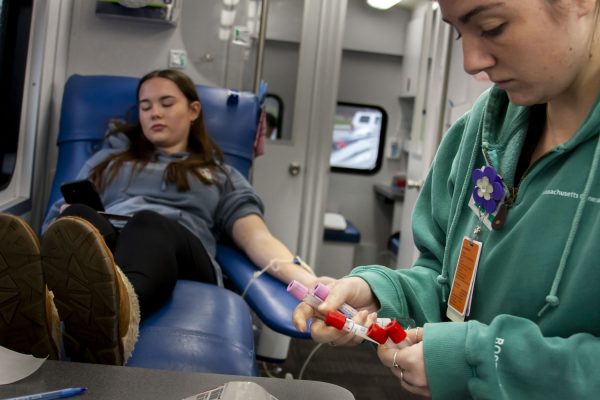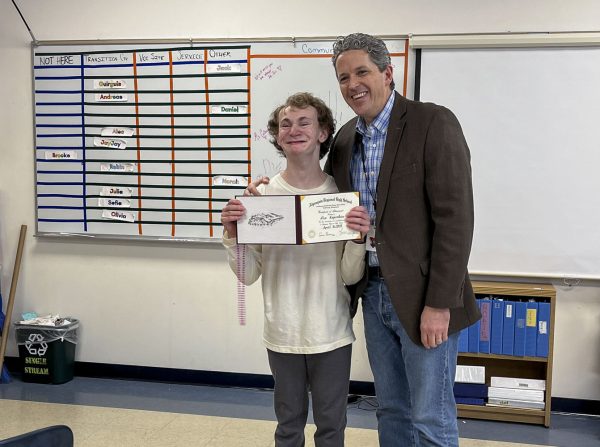The science behind snow day decisions
Head of maintenance Bud Richardson shovels snow off of the library’s roof on Thursday, February 12. Snow piles around Massachusetts grow as space to put the snow runs out. According to the Washington Post, the average winter snowfall by this date in Worcester County is 40.6 inches. At the time of this photo, the county already had close to 92.1 inches of snow.
February 24, 2015
Snow days have long been a staple of the New England high school experience. Even with five snow days over the course of three weeks, few students truly understand the complexities that go into the decision to cancel school.
When snow is in the forecast, Northborough-Southborough Public Schools superintendent Christine Johnson and other administrators from the eleven neighboring school districts log on to what they affectionately call “The Breakfast Club Snow Chain”. When the weather forecast is predicting unfavorable conditions for school, the districts rely heavily on each other to share thoughts and information.
“When there is snow in the forecast, I am up at 4:30. The first thing I do is check the weather,” Johnson said. “I make contact with [the Department of Public Works] in our communities and check on the road conditions. I continue to monitor the forecast, [and when] ‘The Breakfast Club’ is up and running, we all log in at about 4-4:30 and look for shared information. But, most importantly, [are] the conditions in our own community.”
According to Johnson, her most important source of information is the Department of Public Works (DPW): the biggest factor behind the decision is the conditions of the roads.
Johnson ideally wants to make the decision by 5 a.m.
“We will call homes no later than seven [in the morning]. We are very cognizant of the fact that the earlier the notification, the better for parents and students,” Johnson said.
Temperature dips have also sparked conversation about possible school cancellation among students and faculty.
“In the 15 years I’ve been driving, I’ve only seen one day canceled just because of temperature,” school bus driver Patricia Franklin said.
Despite weather sources, sometimes it is a tough call for administrators to make.
“In the situation with the rain [December] when I made the decision I got the indication our roads were plowed and sanded, but we have someone who has the best sense of humor, and she’s called Mother Nature,” Johnson said. “When the ice line hovers at 30 degrees and I have my fingers crossed it goes up to 34 [Mother Nature] is going do the opposite.”
Despite the call to cancel school, a student may stay home if that student’s parents feel it is unsafe. The student handbook for the Northborough-Southborough School District says that if a child’s parent does not feel that it is safe for their child to go to school, the child can stay home. However, Johnson hopes that she can make the safest decision possible.
“I just try to make the right decision with all of the information I have,” Johnson said.

